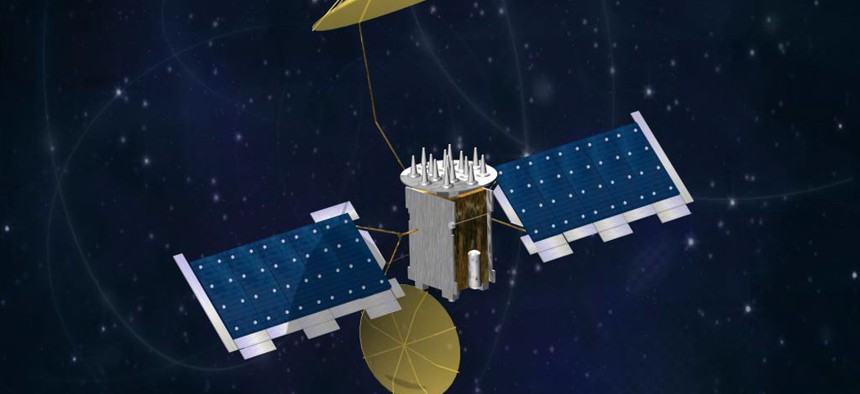Engine glitch stalls Navy's MUOS-5 satellite
The Navy considers its options after the main engine fails for the fifth satellite in the constellation, which is intended to be a spare
The Navy announced this week that the main engine on its latest communications satellite has failed, leaving the platform short of its intended geosynchronous orbit over the Earth's equator.
"Evaluation of the fifth Mobile User Objective System (MUOS) satellite determined that the satellite experienced a failure of the orbit-raising propulsion system during a transfer maneuver on June 29," the Navy said Tuesday, Aug. 2.
"The transfer maneuver was designed to take the satellite from its initial elliptical launch orbit to its final circular geosynchronous orbit. This anomaly resulted in the transfer maneuver being halted."
In a statement, program officials added that MUOS-5 remains in a "stable intermediate orbit" as controllers consider their options for boosting the stalled satellite to its intended 22,300-mile-high orbit over Hawaii.
The main engine anomaly was first disclosed last month when the Space and Naval Warfare Command announced that it was delaying a required transfer maneuver. At the time, Navy officials said they were leaving the communications satellite in a parking orbit while figuring out how to proceed. Those efforts appear to have stalled.
MUOS-5, built by Lockheed Martin, was launched aboard a United Launch Alliance Atlas 5 on June 24 from Cape Canaveral, Fla. It is intended as an on-orbit spare. Hence, program officials asserted the MUOS-5 glitch would not affect the current four-satellite constellation launched over the last several years to provide secure narrow-band tactical satellite communications for mobile forces.
The fourth of the constellation was launched in September 2015 and, once moved into position, reportedly gives the Navy and other joint forces nearly global satellite communications covers, at 16 times the data rate of the Navy’s current Ultra High Frequency satellite system.
Early this year, the Navy and Army demonstrated MUOS’ ability to support talk, text and data sharing during a land-sea exercise in Hawaii.
The constellation also supports existing and new wideband CDMA satellite communications. Although the transition to MUOS has not always been smooth. Ground stations that would use waveforms based on CDMA, which stands for code division, multiple access, last year reportedly encountered difficulties that have left much of the MUOS constellation's capacity unused.
NEXT STORY: Air Force says the F-35 is combat ready




